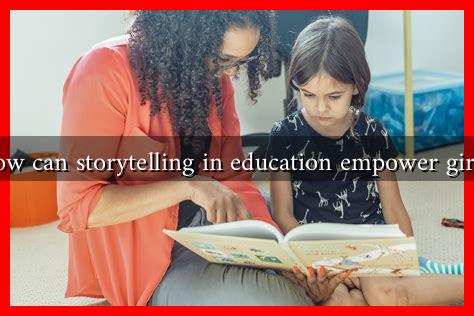-
Table of Contents
How Can Storytelling in Education Empower Girls?
Storytelling has been an integral part of human culture for centuries, serving as a means of communication, education, and entertainment. In the realm of education, storytelling can be a powerful tool, particularly for empowering girls. By engaging their imaginations and fostering critical thinking, storytelling can help girls navigate their identities, challenge societal norms, and inspire them to pursue their dreams. This article explores how storytelling in education can empower girls, supported by relevant examples and statistics.
The Importance of Storytelling in Education
Storytelling is not just about relaying information; it is about creating connections and fostering understanding. In educational settings, storytelling can:
- Enhance comprehension and retention of information.
- Encourage empathy and emotional intelligence.
- Promote cultural awareness and diversity.
- Stimulate creativity and critical thinking.
For girls, these benefits are particularly significant. They often face unique challenges in educational environments, including gender bias, societal expectations, and limited access to resources. Storytelling can serve as a means of overcoming these obstacles.
Building Confidence Through Narrative
One of the most profound ways storytelling empowers girls is by building their confidence. When girls see themselves represented in stories, they are more likely to believe in their potential. For instance, programs like Girls Who Code use storytelling to inspire young girls to pursue careers in technology. By sharing narratives of successful women in tech, the program helps girls envision themselves in similar roles.
Moreover, storytelling allows girls to express their own experiences and challenges. When they share their stories, they validate their feelings and experiences, which can be incredibly empowering. This practice not only boosts self-esteem but also fosters a sense of community among girls.
Challenging Stereotypes and Societal Norms
Storytelling can also serve as a powerful tool for challenging stereotypes and societal norms that often limit girls’ aspirations. By presenting alternative narratives, educators can help girls question traditional gender roles and envision a broader range of possibilities for their futures.
- Literature that features strong female protagonists can inspire girls to break free from societal constraints.
- Storytelling workshops can encourage girls to create their own narratives, allowing them to redefine their identities.
- Digital storytelling platforms enable girls to share their stories with a global audience, amplifying their voices.
For example, the Girls Leadership organization uses storytelling to teach girls leadership skills. By engaging in storytelling exercises, girls learn to articulate their thoughts and assert their opinions, which is crucial for challenging societal norms.
Fostering Empathy and Understanding
Storytelling also plays a vital role in fostering empathy and understanding among peers. When girls share their stories, they create opportunities for dialogue and connection. This can be particularly important in diverse classrooms where girls from different backgrounds may have varying experiences.
- Storytelling can bridge cultural gaps and promote inclusivity.
- It encourages active listening and respect for different perspectives.
- Empathy gained through storytelling can lead to stronger support networks among girls.
Programs like Ashoka focus on social entrepreneurship and use storytelling to empower young girls to become changemakers in their communities. By sharing their stories, girls learn to empathize with others and understand the impact of their actions.
Conclusion: The Transformative Power of Storytelling
In conclusion, storytelling in education is a transformative tool that can empower girls in numerous ways. By building confidence, challenging stereotypes, and fostering empathy, storytelling helps girls navigate their identities and envision a future filled with possibilities. As educators and advocates, it is crucial to harness the power of storytelling to create inclusive and supportive environments for girls. By doing so, we not only empower them but also contribute to a more equitable society where every girl can thrive.

